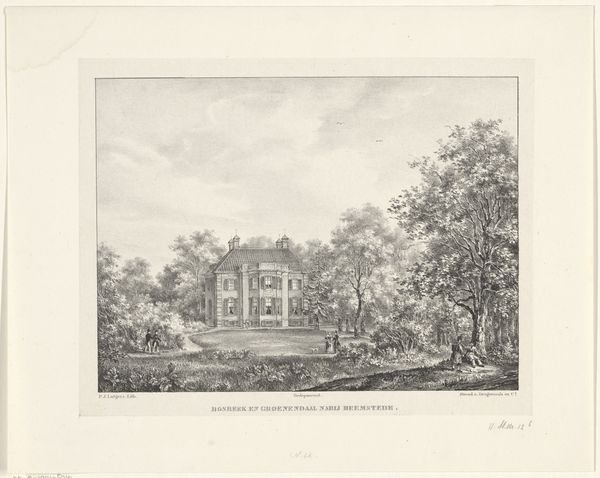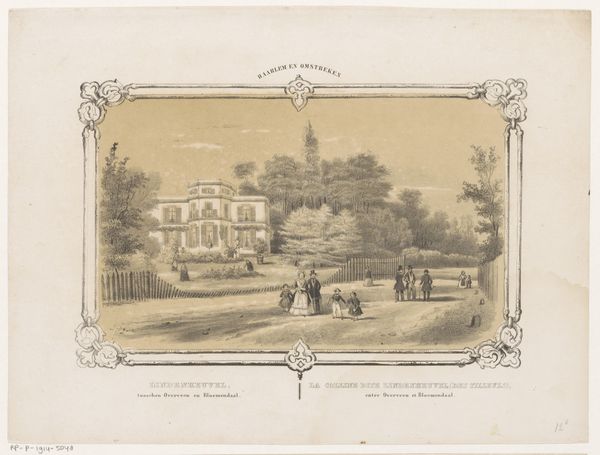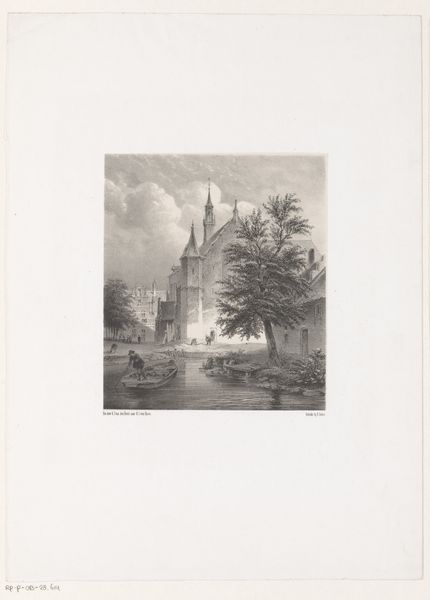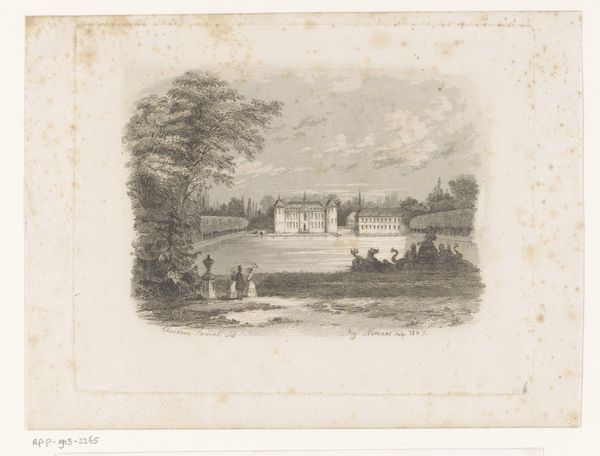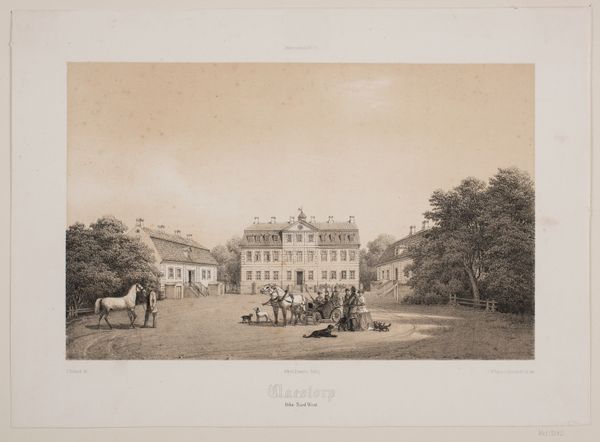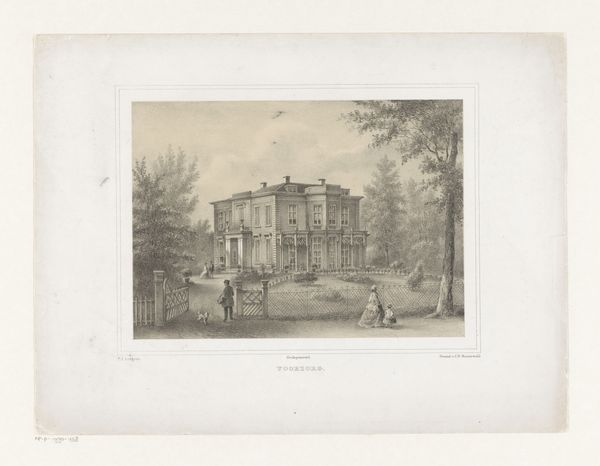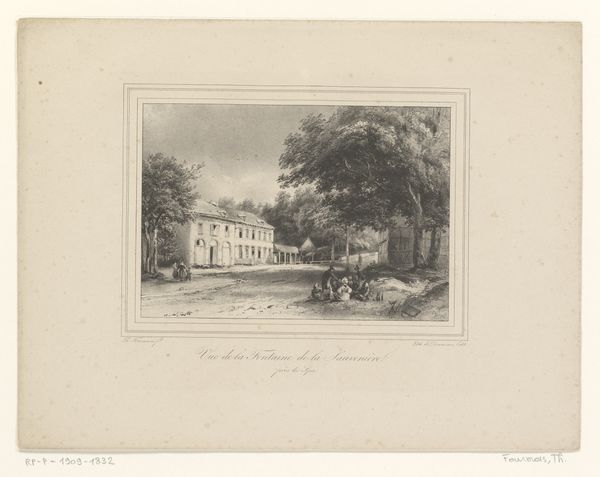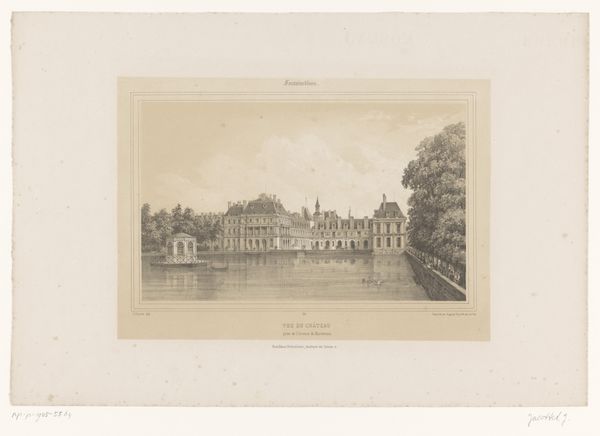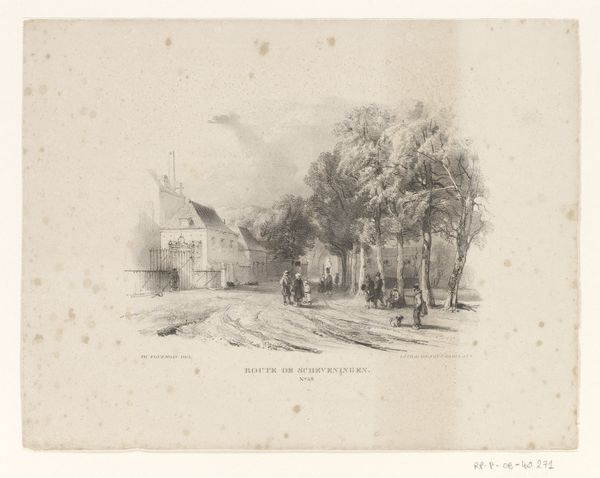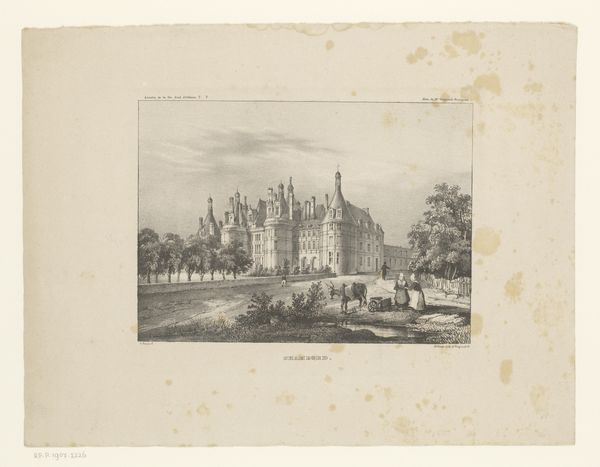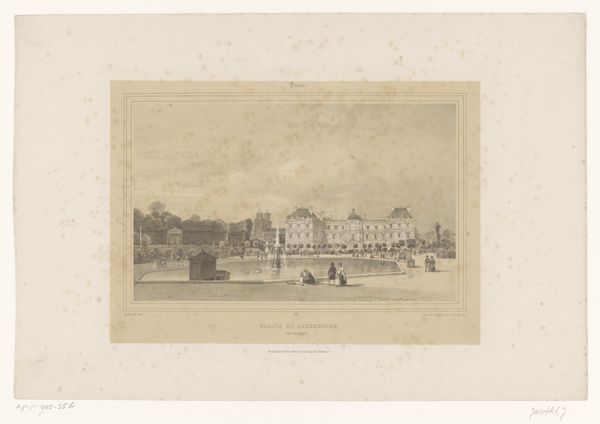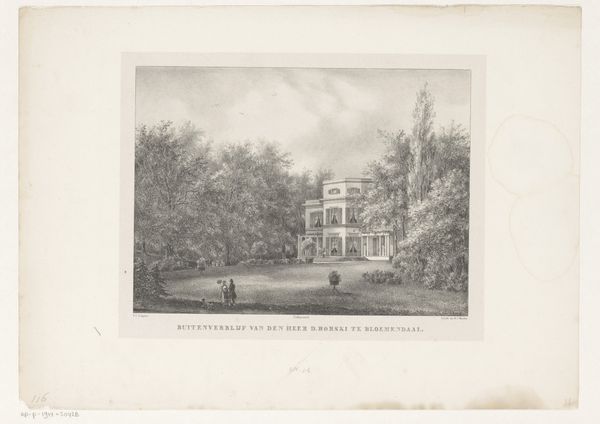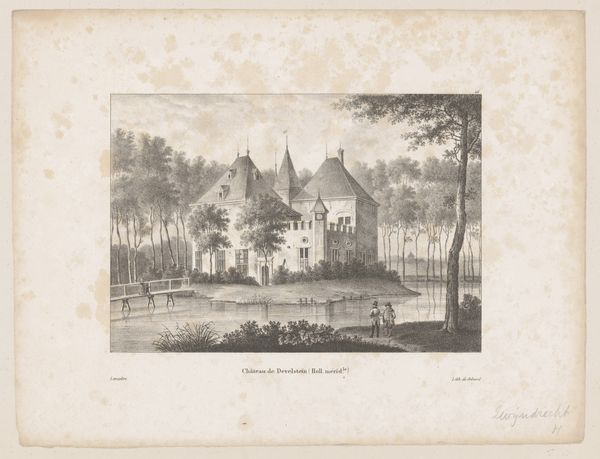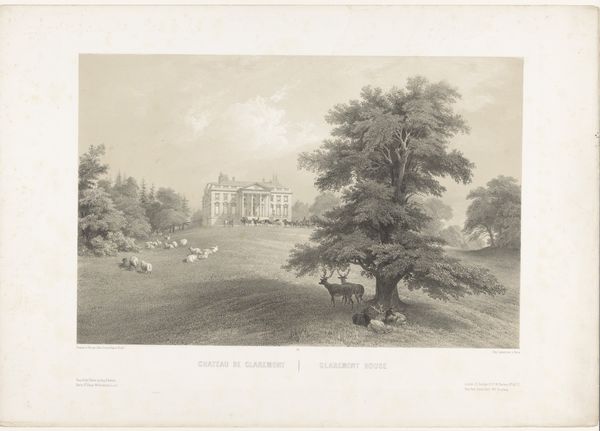
print, engraving
# print
#
landscape
#
cityscape
#
academic-art
#
engraving
#
realism
Dimensions: height 399 mm, width 568 mm
Copyright: Rijks Museum: Open Domain
Curator: We're looking at a print titled "Zicht op St John's College in Cambridge," made between 1855 and 1856 by Louis Jules Arnout. Editor: It has an undeniably serene atmosphere. The careful lines almost give it a photographic quality despite being an engraving. And it seems rather…massive? Curator: The scale of Collegiate architecture in the mid-19th century served many purposes, reinforcing hierarchies and a sense of institutional power that landscape paintings were intended to express. Editor: It's interesting how the focus on rendering like this places emphasis back onto labor - all the tiny marks painstakingly etched into a plate. It becomes a document of material transformation just as much as it represents a place. I wonder who would have consumed something like this and what that reveals about Victorian society? Curator: Likely consumed by those within or aspiring to that very elite class that benefited from the image. Cityscapes like this reinforced the perception of British societal accomplishments while often obscuring the realities of labor and social issues outside the frame. The engraving process also played into these social forces as this technology aided in mass reproduction of imagery and dissemination. Editor: Mass dissemination for the upper class though, correct? The crispness of detail would demand a high-quality paper, more expensive inks perhaps? Not exactly populist! It reminds us of the intricate economies behind supposedly simple depictions of landscape and architectural subject matter. Curator: I agree. Consider also the function within the college itself; these images become visual emblems of its legacy—symbols of enduring educational authority that are designed to not only document but to impress potential benefactors, students, and their families. The visual record is tied directly to the institution's aspirations. Editor: It reframes my view; that these images might work as a commodity driving real social agency - for both consumers and producers. Seeing the relationship between place, production, and class like this opens the artwork up. Curator: Indeed, examining prints like this helps us recognize how landscapes function far beyond pretty pictures - they participate in reinforcing cultural values, whether intentionally or not. Editor: Absolutely. And that shift changes the conversation from ‘what do we see’ into ‘how does this exist in our own modern world?’ That is an exciting material relationship to discover.
Comments
No comments
Be the first to comment and join the conversation on the ultimate creative platform.
